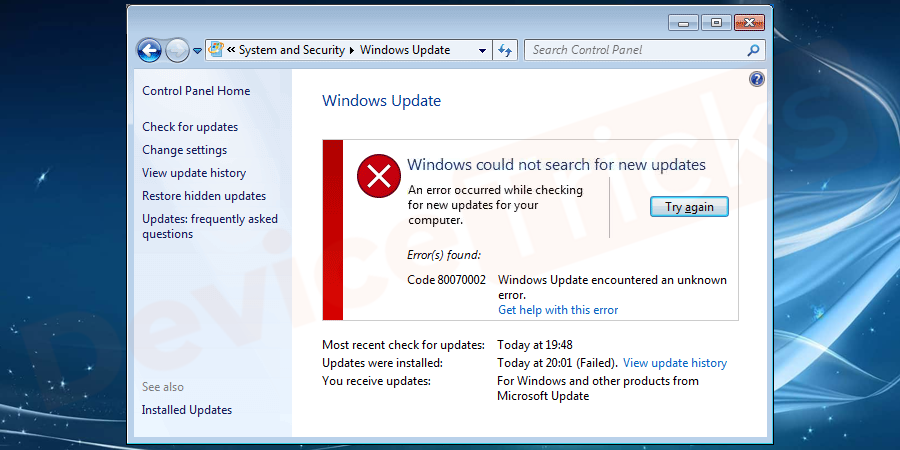
- #Error code 0x80070057 windows update error how to
- #Error code 0x80070057 windows update error install
#Error code 0x80070057 windows update error how to
For more information on how to run Windows Update, see How to get an update through Windows Update. This update is provided as an Optional update from Windows Update. For more information, see Add language packs to Windows. If you do, the language-specific changes in the update will not be applied, and you will have to reinstall the update.
#Error code 0x80070057 windows update error install
Important Do not install a language pack after you install this update. The resolution is to modify Windows Authz not to require the presence of the optional SECURITY_DESCRIPTOR structure. To resolve this issue, we have released an update through Windows Update and Microsoft Download Center for Windows 8.1 and Windows Server 2012 R2. This problem occurs because the SECURITY_DESCRIPTOR structure that is returned by the server contains a NULL Owner field when the NetShareGetInfo call returns to Windows Explorer. However, if the file share is first mapped to a drive letter, the "effective access" permissions are displayed, and you don't receive the error message. In this scenario, the request fails, and you receive the following error message:Ĭode 0x80070057 The parameter is incorrect. You enter a Universal Naming Convention (UNC) folder path. The file or folder is located on a non-Microsoft Server Message Block (SMB) 3.0 server product.

You use Windows Explorer to display a user's "effective access" to a file or a folder on a file share. To provide feedback regarding a potential resolution on these systems, please contact Microsoft Support. Note This update does not apply to Windows 8 or Windows Server 2012. Before you install this update, check out the Prerequisites section. You can resolve this issue for Windows 8.1 and Windows Server 2012 R2 by using the update in this article. This article describes an issue that occurs when you try to display a user's "effective access" to a file in Windows 8.1, Windows Server 2012 R2, Windows 8, or Windows Server 2012. Windows Server 2012 R2 Datacenter Windows Server 2012 R2 Standard Windows 8 Enterprise Windows 8.1 Enterprise Windows 8.1 Pro Windows Server 2012 Datacenter Windows 8 Pro More.


 0 kommentar(er)
0 kommentar(er)
